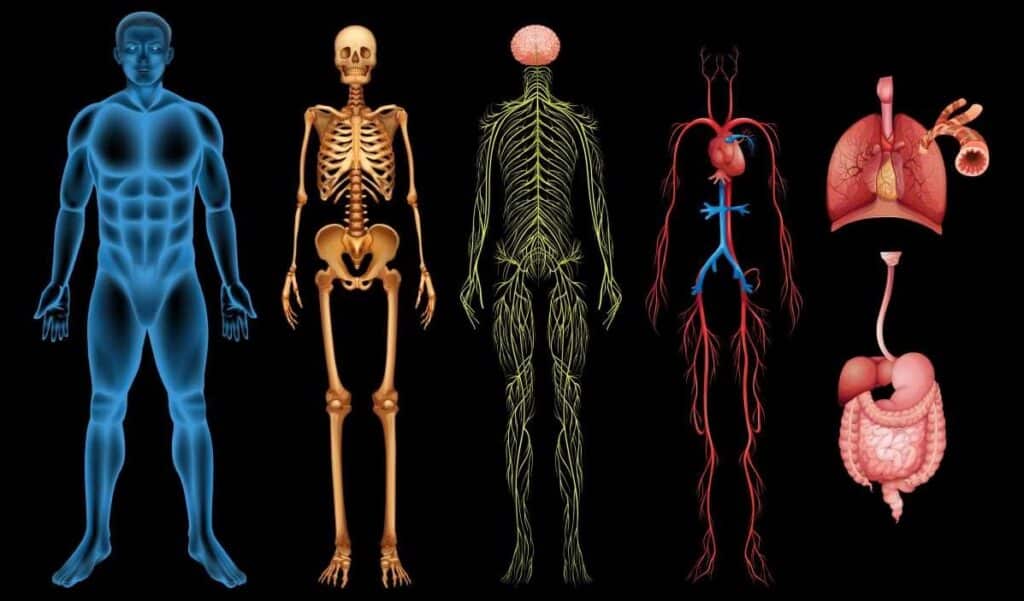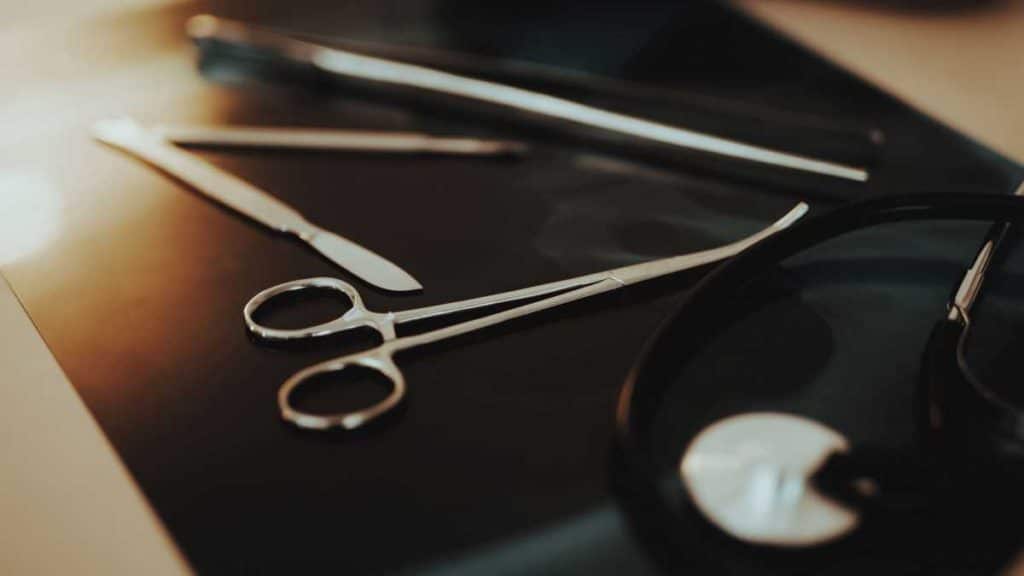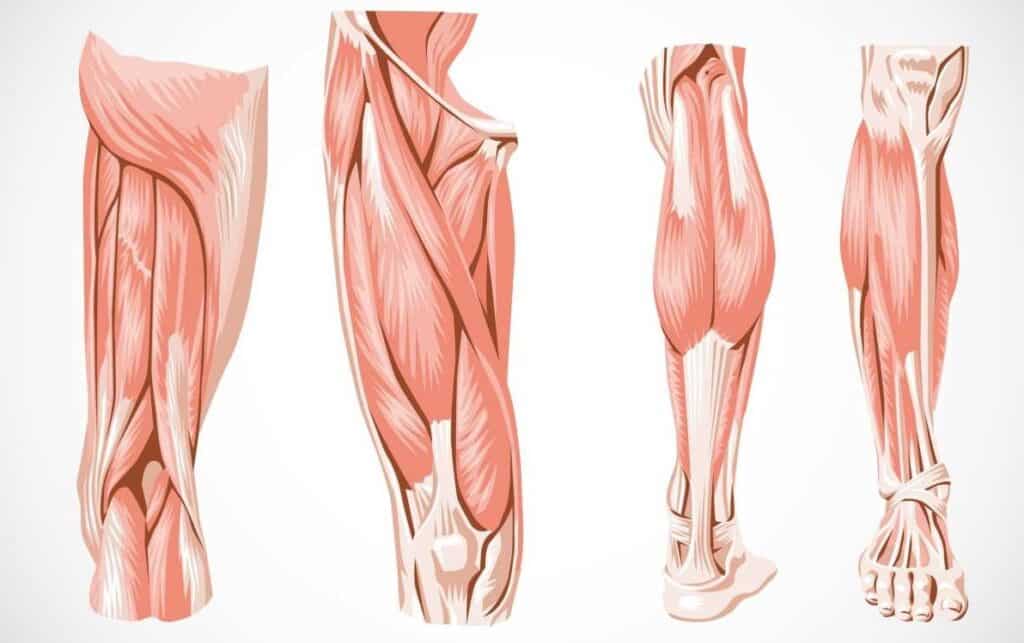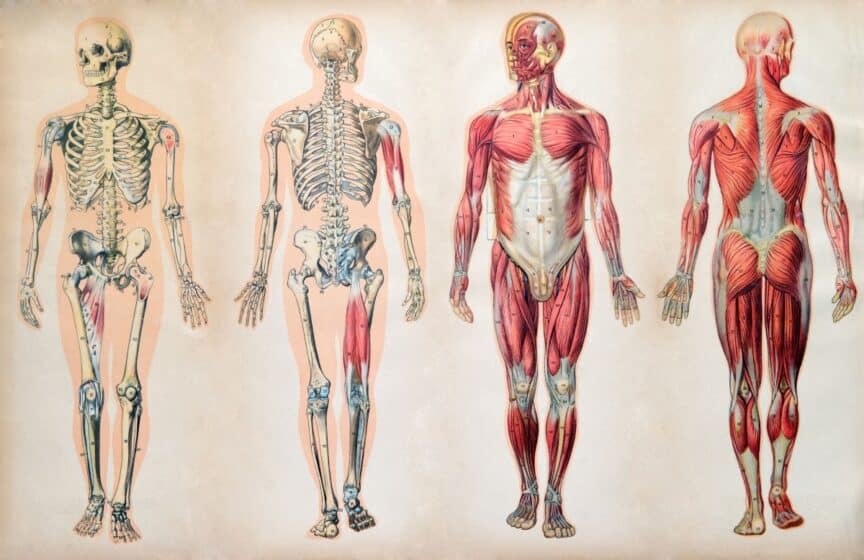If there were ever only one single course that PT students should absolutely master in the name of making PT school way easier and their clinical skills way sharper, gross anatomy would be that course. Simply put, it’s a very literal foundation from which most other curricula and clinical expertise derive.
Just about everything in the world of PT academics and clinical practice is built upon the anatomy of the human body. In a very real sense, it is analogous to a map and compass for those exploring the great outdoors — without them, you’re in serious trouble.
I’d argue that there’s a direct correlation between how well a student does in their gross anatomy course and how well they do in PT school. It was pretty obvious within my cohort when I was in school and from numerous other practitioners and students that I’ve talked to, they largely echo the same sentiment.
The good news is that it’s never too early to start learning the material, as you don’t need to be in school to start mastering it. So, let’s look at some quick tips that can help you prepare and crush this monster of a course!
And, before we dive into things here, be sure to check out my post on The Best FREE Online Neuroscience Textbook in order to help you slay the neuro dragon.
ARTICLE OVERVIEW (Quick Links)
Click/tap any of the following headlines to instantly jump to that section of the article!
• Tip 1: Build your anatomy foundation as soon as you can
• Tip 2: Spend as much time as you can in the gross anatomy lab
• Tip 3: Focus largely on Musculoskeletal and Neurological anatomy
• Tip 4: Study and learn however YOU feel is best
• Tip 5: Use technology to your advantage
• Tip 6: You can never know too much anatomy
Tip 1: Build your anatomy foundation as soon as you can

It’s NEVER too early to start studying anatomy!
You don’t have to be in PT school in order to start studying and mastering this topic. In fact, if you wait until you’re in PT school to do so, you’re likely making life much harder for yourself, and you’re CERTAINLY cheating yourself out of more effective learning time within the gross anatomy lab. This is because when you’re struggling to just keep your head above water, you miss out on learning otherwise valuable knowledge that you could learn if you weren’t struggling to keep up with the basics.
- If you’re in high school, you can start learning and mastering anatomy.
- If you’re in undergrad, you can start learning and mastering anatomy.
The beauty of anatomy is that it’s practically the same all around the world. It’s not like gross anatomy courses vary based on the institution that you’re at (they might VERY slightly, but that’s it).
Human anatomy doesn’t exactly change at a quick rate, so you don’t need the most recent edition of books in order to learn it, and you certainly don’t need to rely on a professor to “teach” you the vast majority of anatomy. So, you might as well start right now.
Gross anatomy is simple in concept: know everything. That’s the only rule to the game. And while that certainly isn’t easy, the concept is: know everything.
This means that you can’t really be blindsided on exams. And since the rule is simple, you might as well start right now — pick something and study it, because you’ll have to know it at some point in your gross anatomy course.
The extent to which you pursue learning your anatomy is up to you, of course, but here’s a question: Is there any negative consequence to being well-versed on anatomy; is there something harmful to being more well-informed on knowledge of the body?
The fact is that most PT schools start off with gross anatomy within your first semester – and gross anatomy is no joke. Any structure – any anatomical feature is fair game to be tested on. If it’s a physical structure, it’s fair game.
Gross anatomy moves at a speed that will feel lightning-fast. If you’re not strong with your baseline anatomy, then at best you will get through the course having missed amazing opportunities to truly master and further develop your anatomical knowledge.
At worst, you’ll do poorly in the course and either have to re-take it or have your back up against the wall for the rest of your time in the program.
Tip 2: Spend as much time as you can in the gross anatomy lab

No matter how much you love anatomy, you’ll likely be sick of it by the time the semester(s) is/are over with. Your scrubs will be permanently scented with the smell of cadaver and you’ll have gone through more scalpel blades than you can imagine.
This is because you will be spending an incredible amount of mandated time within the gross anatomy lab each and every week.
…And my contention would be that you head back into the lab for all the open lab hours you can get on top of that.
Open lab hours simply refer to hours outside of your gross anatomy class where you are permitted to head back into the lab to examine the cadavers and/or prosection for further learning. There is usually one or more TA’s (Teachers Assistants) who monitor the lab for those hours who can assist you with your learning.
Hear me when I tell you that if you fall behind in studying anatomy, it can be nearly impossible to catch up. Do everything that you can to not fall behind in this class. It is a hundred times easier to stay caught up than trying to catch up. It’s kind of like the old saying “an ounce of prevention is worth a pound of cure.” Open lab hours are super helpful for this.
Doing poorly on your first exam can wreck your confidence and/or put some major pressure on you for the remainder of the course. Try not to go that route at all costs.
That being said, it would be prudent of you to spend all available open-lab hours in the gross lab going over everything you possibly can on the cadavers and/or prosection, yes even when you’re sick of being in the lab and can’t get the smell of cadaver out of your scrubs.
This extra study time comes in handy for memorizing structures and so on. Nowhere is this more directly beneficial than when you do your bell-ringer exams; you don’t have a lot of time to guess or deduce what you’re looking at, so you need to know it six ways to Sunday.
The more you can quickly and confidently identify a structure in the exams, the better off you’ll be.
The semester won’t last forever. That’s what you will likely need to remind yourself of as you force yourself to spend extra hours in the lab.
Not everyone will necessarily need to adopt this tactic, but everyone can still benefit from it. There are no consequences to knowing, learning and becoming more efficient with your anatomy.
Tip 3: Focus on musculoskeletal and neurological anatomy

Chances are that this is the type of anatomy that you’re most interested in, anyways.
Some schools don’t require PT students to focus on visceral anatomy a whole lot since it’s not highly relevant to the profession of PT’s. For our school, students in the PA program (physician’s assistant) were in the same gross anatomy course as us PT students were.
What this meant was that we had to pour some serious time into visceral anatomy since the PA students really needed to know it for their program and occupation. I wasn’t the strongest with visceral anatomy and didn’t enjoy studying it as much, but regardless, I still needed to know it.
As I’ve said before, more knowledge never hurts. But the vast majority of PT school will require you to draw upon your MSK and neuroanatomy knowledge and not visceral anatomical knowledge, so study and know your visceral anatomy for gross (if you need to), but know that mastering it certainly isn’t required to make your time in PT school any easier.
Tip 4: Study and learn however YOU feel is best
Repeat after me: It’s not stupid if it works.
It was interesting to me during my time in PT school how many of my friends or peers would say that that they found a silly little way to memorize something or they had a silly way to figure out a concept, etc.
…uhhh, it’s not silly or stupid since it clearly worked for you! Remember, there’s more than one way to study and learn, and if you find a way that works for you – no matter how unorthodox – take it and run with it! Have some confidence in your study habits!
If your study methods or the way you memorize information or concepts works for you, you shouldn’t care less about how “silly” or “stupid” it may be. If it works for you, then that’s what matters.
The key is knowing that it works for you. Don’t try to follow someone else’s study style or methods simply because it works for them. Sure, try it for yourself, but don’t be afraid to abandon ship and find another method that works for you if need be.
One of the study methods I did consistently throughout PT school was study very early in the mornings before classes started, even for morning classes. I was always disciplined to go to bed early in order to wake up really early and get a few hours of study/review in on campus before classes started.
Our school had a 24/7 computer lab that students could use and I was routinely in there at 5:30 or 6 am on weekdays.
Why? Well, for me, it provided me with complete silence and no interruptions for the morning. I was oftentimes the only soul in that lab and studying with a mind that was fresh off a full night’s sleep made learning and retaining information way easier than trying to do it at the end of the day when I was physically tired and the computer lab filled with a dozen clambering people or friends who would distract me.
Yes, my peers largely teased me (in a fun-loving way) and many of them just couldn’t fathom why I’d choose to get up so early each morning. But, I just let the results speak for themselves. Plus, it was an enjoyable way for me to study. I loved not being interrupted or being distracted by people around me.
So, take what works for you and run with it! Don’t be afraid to experiment and continually tweak your study habits based on your own needs, but once you find what works for you, don’t even think twice about it!
Tip 5: Use technology to your advantage

One of the nice things about being a PT student in this day and age is that we have some great technology that can greatly assist our learning and augment our understanding of material that we’re trying to learn and master. And the good news is that there are some amazing resources out there dedicated to helping you learn your material that are either free or really inexpensive to purchase.
In a separate article, I’ve written about the apps Essential Anatomy and Complete Anatomy, both by 3D4 Medical. Both are 3D medical modelling anatomy apps that provide information on all structures and systems within the human body, with Essential Anatomy being a slightly more basic (but still amazingly powerful) version than the full-blown Complete Anatomy.
While I still used anatomy textbooks, having a 3D anatomy model that I could rotate, strip down and pull up all pertinent information within a single iPad app was invaluable to me, both for gross anatomy and the rest of my days in PT school.
YouTube is another great resource, and it’s free. There are some amazing channels out there that provide great PT information to students (for anatomy and other courses). TheNotedAnatomist, PhysioTutors and many other great channels are out there that can really help for your anatomy (and other courses).
So, take time to explore your options out there. We live in a day and age where amazing resources are all around us. Sometimes you just have to be willing to find them.
Tip 6: You can never know too much anatomy

Remember, everything in PT school is largely built off of anatomy. Even if you did great in your gross anatomy course, taking time every week to review key anatomical systems or features can really save you some headaches and stress down the road.
It doesn’t matter how much anatomy you know, you can ALWAYS learn more and there are ZERO consequences to learning and knowing more anatomy. Seriously, name something bad about knowing as much as possible about human anatomy. I’ll wait.
Throughout your time in your PT program you will likely hear from your professors on numerous occasions the words “think back to anatomy…” as they begin to dive in on a concept or feature for the content you’re about to cover in whichever course you’ll be in.
It’s very easy to let much of what you learned in gross anatomy fall by the wayside after you’re done the course. This isn’t to say that you’re expected to remember 100% of everything you initially learned and/or covered in that course, but rather taking time to always review key anatomical concepts every week will help you perform better not only in your subsequent courses but also when it comes time to doing your clinical rotations.
The truth is that you could take gross anatomy a dozen times and always learn and memorize new things each time you took the course.
My personal advice/insight is to continually work on memorizing your anatomical features, muscles and their attachments and their innervations as well as actions.
Closing remarks
Gross anatomy is a heck of a course, both in terms of the sheer amount of material you need to cover and learn as well as discovering just how truly amazing the human body is. Give it the respect it deserves and you should be just fine.
But, if you don’t respect it, it’s easy to find yourself falling behind, getting stressed and settling in for a miserable semester that can not only land you on shaky academic ground but make the rest of your PT courses all that much harder due to less-than-solid knowledge of the human body.
Get started studying as soon as you can. Just a little bit here, a little bit there. It adds up quickly and will free up time for you during the actual semester. And since you have to know just about everything, it doesn’t matter what you choose to study right now — you’ll have to know it at some point in the course, anyways.
My advice would be to focus most of your pre-course time on all things muscles, bones and nerves. They’re the meat-and-potatoes of the course and having a solid foundation with them by the time you head into the course will review you well.
Grind hard and have a little fun along the way! You got this.

Hi! I’m Jim Wittstrom, PT, DPT, CSCS, Pn1.
I am a physical therapist who is passionate about all things pertaining to strength & conditioning, human movement, injury prevention and rehabilitation. I created StrengthResurgence.com in order to help others become stronger and healthier. I also love helping aspiring students and therapists fulfill their dreams of becoming successful in school and within their clinical PT practice. Thanks for checking out my site!

